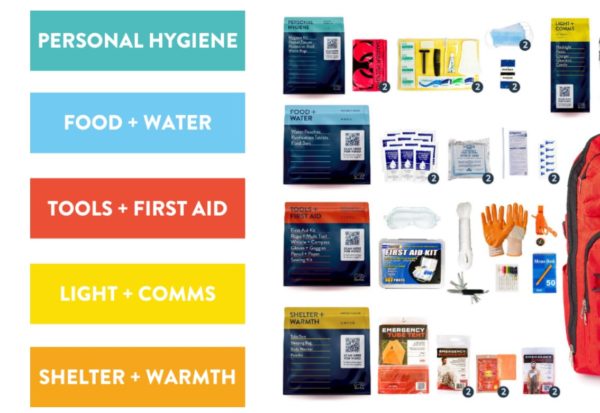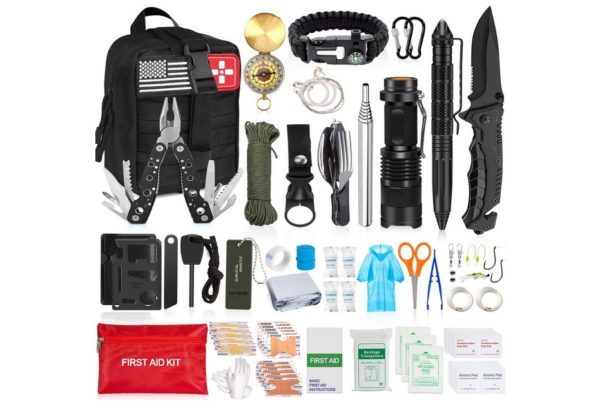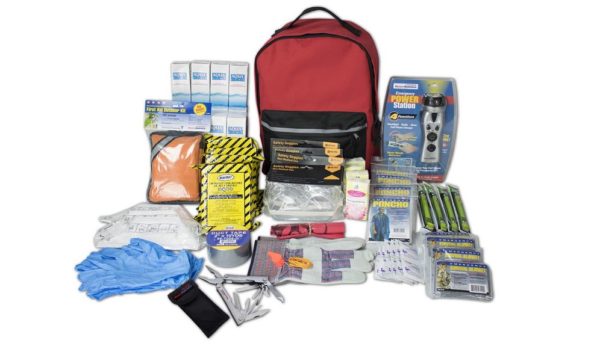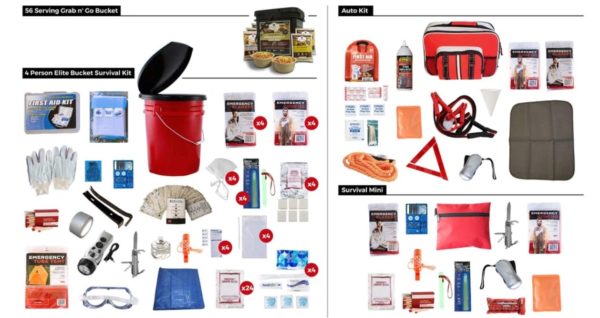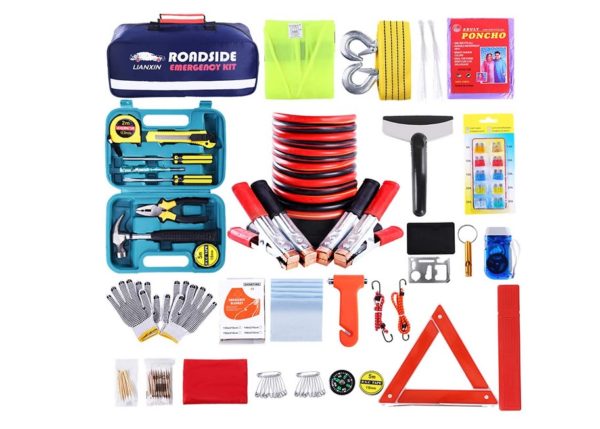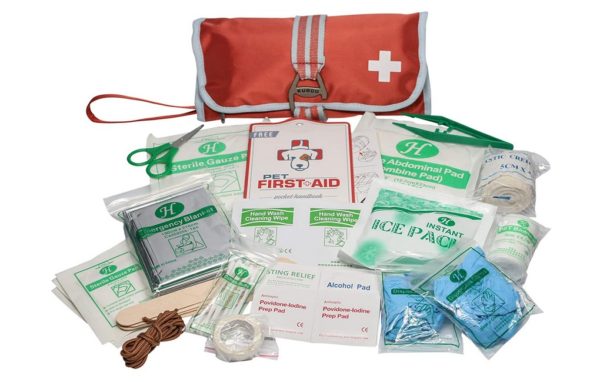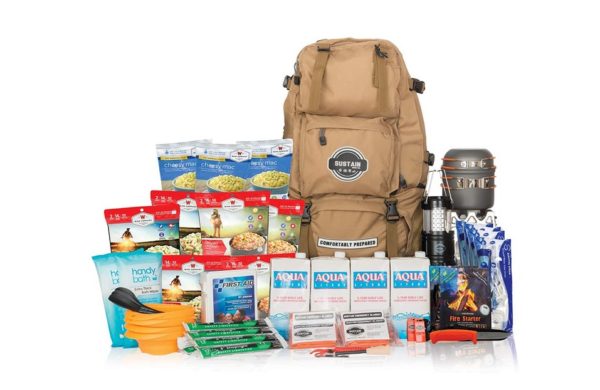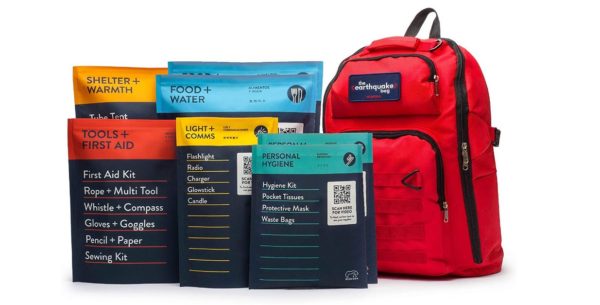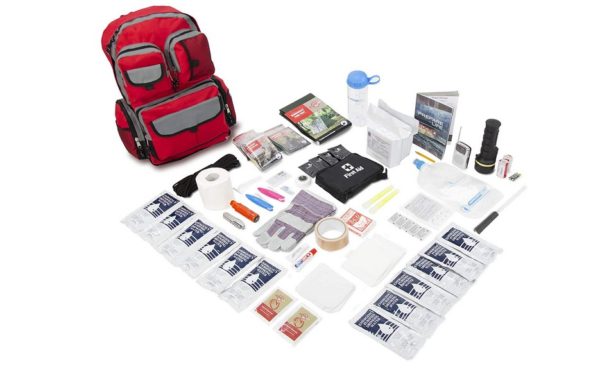Best Survival Kits.
Disasters or emergencies can strike at any time when we least expect them to. To protect you and your loved ones, a survival kit comes in handy. A survival kit is basically a pack, bag, pouch, or box that contains all the essential items one needs to survive natural disasters such as floods, earthquakes, fires, and other emergencies. They come equipped with various tools such as knives, first aid kits, fire starters, food and water, survival tools, shelter and warmth gear, and many others that keep you well equipped if disaster strikes. Survival kits will give you peace of mind knowing that you are well prepared for any scenario.
Types of Survival Kits
- Military Survival Kits
- Wilderness Survival Kits
- Apocalypse survival kit
- Family Survival Kits
- Camping Survival Kits
- Bug Out Bag Survival Kits
- Earthquakes and Hurricane Survival Kits
- Home Emergency Kits
- School Emergency Kits
- Roadside/Car Emergency Kits
What Should be in a Survival Kit?
Contents of a survival kit will majorly depend on the type of survival kit, Each type has its own unique composition. Generally, a survival kit should have the following.
- Food and Water
- Light and Communication Shelter and Warmth:
- Survival Tools
- Hygiene and Sanitation
- First Aid
- Emergency Survival Information, maps, books, etc
- Multipurpose tools
Here are the Best Survival Kits.
1) AOKIWO 126Pcs Emergency Survival Kit ( for Camping and Hiking)
|
2) Ready America Emergency Kit (1,2,4 Person) for Outdoor
|
3) BlackHawk Family Preparedness Package w/ Food Storage ( for disaster preparedness)
|
4) LIANXIN Roadside Assistance Emergency Kit ( for cars)
|
5) Kurgo Portable Pet First Aid Kit ( for Pets)
|
6) Sustain Supply Co.Premium Emergency Survival Bag/Kit (for bug out bag)
|
7) Redfora Complete Earthquake Bag ( for Earthquakes)
|
8) Emergency Zone Family Prep 72 Hour Survival Kit/Go-Bag ( For Families)
|
Why do you Need a Survival Kit?
Natural calamities happen anytime, anywhere. Having an emergency survival kit at home, in your car, or at your workplace is an important step to prepare and keep yourself safe when calamities strike. Survival kits contain essential food and medical supplies important to help you survive the first hours of disaster before help arrives.
The right emergency survival kit should help you deal with a wide range of disasters from hurricanes and fires to pandemics and earthquakes. Help is not always readily available, that’s why the federal government recommends that people have emergency survival kits with supplies to last them for at least 72+ hours.
Here are some reasons why you need a survival kit.
- Peace of mind-Having a survival kit gives you peace of mind. Knowing that you are ready to go in the event of an emergency keeps your mind at peace whether you are at home, in your workplace, or just on the road driving. Additionally, having a plan ready to go helps ease our worries and lessen our stress in a difficult situation. You also get to think straight, which is quite important when disaster strikes.
- Your family will thank you-We all love our family members and we would do anything to keep them happy. In case there is an emergency, this emergency has never been truer. With a survival kit in place, you will worry less about locating important supplies and focus more on caring for your family. Having a survival kit means access to lifesaving medication in case there is a family member injured.
- Temporary shelter-When disaster strikes, shelter is undoubtedly one of the most important things you’ll need. Survival kits come with easy-to-pitch tents that you get to use as temporary shelter to keep everyone in a safe place. Additionally, this kit comes with sleeping bags and body warmers which keep us warm against the biting cold at night.
- Connects us to the outside world-When calamities strike, power and communication signals are interfered with. It is important to keep in touch with the authorities in order to get help. The best survival kits come with AM/FM radio devices that you use to listen to the broadcast. With the radio, you get information about when the rescue teams will reach your area.
- Helps maintain hygiene-During a disaster, it is very important that people maintain their hygiene. While it is nearly impossible to maintain hygiene during such difficult times, having a survival kit helps you do that. In a survival kit, you will find hygiene and sanitation items such as sanitary napkins, wet wipes, combs, razors, soap, and wet wipes among many others. You can use these items to stay hygienic and bid goodbye to health problems that arise as a result of poor sanitation.
Emergency survival kits are readily available in the market today. They are available at a relatively affordable price and they come a long way in saving lives when disasters strike. With Mother Nature being unpredictable all the time, it is important that we have a survival kit in place just to stay prepared.
Where do You Keep a Survival kit?
Emergency survival kits require proper storage to ensure that the supplies inside stay safe for use and consumption. As we stay prepared for disasters, here is a guide on how to store your survival kit.
Storing your survival kit at home.
If you have a large-sized survival kit, you’ll need to have adequate space to store it at a place where it is convenient for everyone in the house to have access to it when disaster strikes. If you have a spare room inside the house, it can serve as the best place to store it. The room must be free of light, dust, and humidity to preserve the integrity of all supplies inside. You can also use your basement to store the kit. The downside of storing survival kits in the basement is that you might fail to have adequate time to get the kit when immediate evacuations are called for.
Another good place to store the kit at home is outdoors. Think of portable buildings that you can assemble anywhere in your ground probably close to the house or around the garden. Sheds and prefab buildings make great survival kits storage areas. By having a specific place for your emergency survival kit, you avoid clutter and confusion of finding important things you need after the disaster strikes.
Keeping your survival kit outside the house.
You’ll also be required to have another survival kit stored away from home. This can either be inside your car, at your place of work, or in a second residence that you own. If you have a second residence may be a townhouse, or a cabin in the woods, consider organizing an emergency kit there so you can get through an urgent situation. Its contents can be identical to the kit you have at home or specific to the calamities that your area is prone to.
Having your emergency kit kept at a secondary location also helps if you are forced to evacuate your primary residence so fast that you don’t have time to pick your home survival kit. You simply head to the secondary location and pick the kit stored there. Remember to always check on these survival kits at least once a month to see that they are properly stored. Preserving this kit is important to your survival and comfort as well.
If you don’t own a secondary property, your place of work is another viable option. You can use your desk drawer to reserve a kit that will assist you during emergencies. A grab bag is another good alternative as you can easily snatch it and evacuate as fast as possible.
Storing your survival kit properly means that whenever you need to evacuate your premises, you can easily and access it. Each household has individual needs when it comes to survival kits, but everyone will be required to have the kit stored at a convenient place where everyone has an access to it.
What do you need in a survival kit list?
While the supplies inside any survival kit differ from one kit to the other, here is a list of the basic components that the best survival kits should contain. If you are building a survival kit for the first time, this list is a good place to begin.
- Food and water
When emergencies happen, you don’t know how long you’ll stay without access to water and food. Your survival kit needs to have at least one gallon of water per person per day for 72+ hours. The water should be stored in safe and durable water containers. As water conditions can be uncertain, remember to carry with you some form of water treatment.
You should have enough food supplies to last you through the first 72 hours. The ideal food option is one that’s nutritious and rich in calories. Freeze-dried meals, high-calorie energy bars, and MREs are a good place to start building your food supply.
- First aid and medical supplies
Even when you are extra careful, accidents occur. Whether it’s a splinter or a scrape, it is important that you treat all wounds immediately so they don’t get infected. Ideally, the first aid kit should contain basic items such as bandages, antiseptic ointment, gauze, rubbing alcohol, and gloves. Tweezers and pain medication come in as extras but you’ll be better off if you have them. For medical supplies, ensure that you have doses of over-the-counter pills for pain relief, allergies, and anti-nausea. Always make sure that the first aid kit is placed in a waterproof compartment all the time.
- Survival Handy tools
A headlamp with extra batteries is important. Avoid rechargeable batteries at all costs. Other handy hard goods include waterproof matchsticks, a sturdy multi-tool with a screwdriver, several folding blades, pliers, tweezers, and a tinder. A pen/pencil and several pieces of paper will be handy to write down information.
- Clothing
Clothing will vary depending on the location and conditions. All survival kits should have a spare set of wicking base layers, wool socks, a waterproof shell, a lightweight pair of gloves, and a hat. To ensure that these items stay dry, store them in waterproof sacks.
- Shelter and sleep system
Depending on the shelter type you choose, make sure that the protection it offers is adequate should you spend a night or more outdoors. A tent is the most common thing to carry. You can also add a sleeping bag, garbage blanket, and a space blanket.
- Survival rope
A rope is very important for your survival and comfort. You can do so many things with a rope which includes building an emergency shelter, hoisting food away from animals, creating handles, tying poles together, climbing, hunting traps, and making splints for first aid.
- Survival knife
A knife by your side makes everything you are doing easier. During emergencies, you’ll need a knife that’s both robust and sharp. Other than whittling or carving wood, a knife will help you cut a rope, creating bandages, starting fires, defending yourself from predators, building shelter, and cutting cloth among others.
Factors to Consider when Choosing the Best Survival Kits
- Purpose
Think about the purpose of buying a survival kit. If you are an outdoor enthusiast who likes being in the wilderness, hunting, hiking, or camping it is best if you choose an outdoor survival tool kit. If you are looking to be better prepared for a disaster or unexpected event at home, an emergency preparedness pack that can keep you alive for days is preferably the best option for you.
- Budget
Survival kits come in various price ranges depending on the size and type. Whatever you need, you need to ensure that it is the best you can possible afford. It is however ensure that you do not compromise quality for cheap.
- Size and weight
A good survival kit should be easy to carry and store. The size of the survival kit depends on the number of people who are supposed to use it. A 4 person kit will obviously be heavier than a 2-person kit and one way to make it lighter is by distributing the weight into smaller backpacks where each individual can also pack their personal items.
- Shelf life
Be sure to check the expiry date of supplies when you purchase a survival kit that is pre-assembled. Most quality kits have food and water with a shelf life of 5 years.
- Durability
The durability of the survival kit is really important as you want your kit to be reliable during a disaster. Get a kit from a reputable brand and make sure that the kit’s contents are also from a brand that is reputable. It is also a great idea to transfer your kit to a heavy-duty backpack that offers more space for personal items and carries the weight.
Best Survival Kits FAQs
- What is the importance of a survival kit?
Survival kits are important as they help you to better prepare for a disaster or emergency. It helps you to quickly adjust to situations that are unplanned and unexpected and provides the equipment you need to survive and stay safe.
- What is the most important item in a survival kit?
To be prepared for an emergency wherever you are, it is important to have 7 essential components in your emergency survival kit. These are food, water, sanitation and hygiene, lighting and communication, warmth and shelter, first aid, and other survival tools.
Conclusion
Survival kits are extremely important as they help you to prepare in advance for an emergency or disaster. The best survival kits choice will mostly depend on your personal preferences, the number of people who are supposed to use them, and the type of emergency. One thing that is for sure is that the kits illustrated above are good choices for you to pick from.

